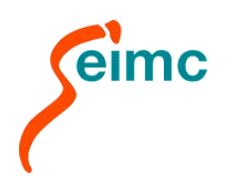We read with great interest the article “Antimicrobial defined daily dose adjusted by weight: a proposal for antibiotic consumption measurement in children” by Montecatine-Alonso et al. The authors provide novel data to formulate and establish a measurement that better reflects the actual use of antibiotics in hospitalized children.1 Quantifying antimicrobial use (AU) is essential in antimicrobial stewardship (AS) since it allows both the measurement of the impact of the program and benchmarking. Currently, an optimal standardized metric of antimicrobial consumption is lacking, especially for the pediatric population. Days of Therapy (DOT) has become the preferred measurement in children and adults, while Defined Daily Dose (DDD) is listed as an alternative option in recent guidelines and publications.2–5 The simultaneous use of at least two metrics to express AU has also been recommended in order to make up for the drawbacks of each one.6
Aiming to define suitable DDD for children, the authors retrospectively collected the age and sex of 45,575 pediatric patients admitted to 10 Spanish hospitals during a 12-month period and also the most frequently used weight-based doses of 29 antibiotics and 4 antifungals. The mean WHO weight for age was then used to estimate DDD for the children. Although the authors acknowledge the main limitations of their study, we would like to further comment on the methodological approach and data interpretation in the current validation phase of the proposed tool.
Firstly, the rate of AU in the included patients was unknown. The AU rate may vary between age ranges, but also between different centers and physicians, according to the reason for admission, the duration of hospital stay, and the individual medical history. Also, even if a 12-month study period may be of reasonable length for the purpose of the study, it should be borne in mind that it only partly avoids the potential impact of seasonality (e.g. the number and severity of infants admitted due to bronchiolitis could change significantly from one year to another).
In addition to the potential deviation of the estimated median age, the calculation of a unique value may oversimplify the high variability of children's weight, precluding the comparison between centers admitting children with different age or weight ranges. In accordance with Porta et al.,7 the authors suggest the use of weight bands to calculate weight-adjusted DDD to allow easier benchmarking. Moreover, to improve the validity of the weight estimation method, data on the actual weight of the study cohort and how these agree with WHO or Spanish reference weight charts would be of great value.
Accurate details on antimicrobial inclusion and exclusion criteria are lacking and it is unclear why some of them were left out, such as voriconazole and the most frequently used antivirals. When surveying the most frequently prescribed doses, the need for consensus could obviate not only variations in patients’ complexity among different centers, but also not so uncommon dosages (e.g. the oral use of amoxicillin at 80mg/kg/day). Finally, the discrepancy in the most frequently prescribed doses in nearly one quarter of cases may be higher in daily clinical practice than what is reflected in a questionnaire under study conditions.
Currently, DOT remains the metric of choice in all age ranges despite its limitations. We believe that efforts should be made into obtaining the most precise AU data (antimicrobial administration and/or prescription data versus purchasing or dispensing data), and improving the homogenization of denominators (days-present versus patient-days) and reliable estimations (patient-days calculation based on calendar days versus passages of midnight).6,8 Likewise, finding complementary tools to overcome the limitations of DOT such as the potential to favor the use of less antimicrobials even when these are of broader spectrum is mandatory.9
The large number of patients and participating centers and a 1-year study period are remarkable strengths of the present study. We believe that this work and future ones could significantly contribute to improving the quantification of AU in children, providing a novel metric complementary to DOT. The proposed DDD adjusted by weight needs internal and external validation. Also, the use of weight bands and focus on a specific age range with more homogeneous weights, such as the neonatal age, should be considered.10







